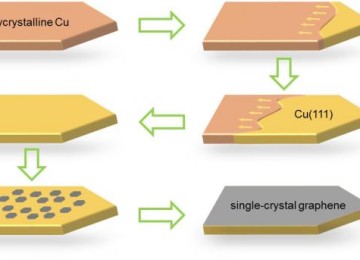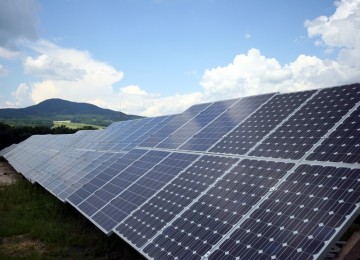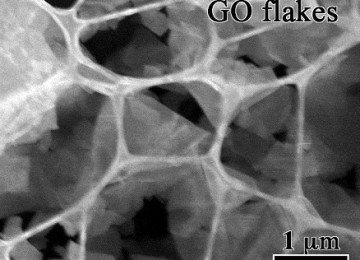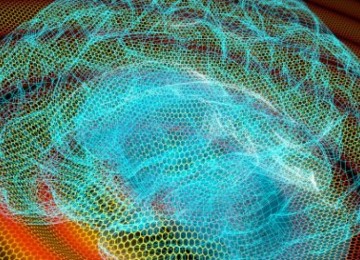Graphene molecular self-assembly configuration controls
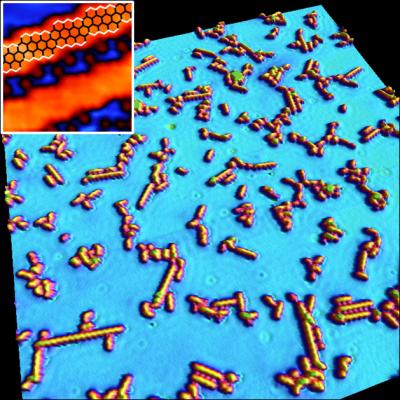
Graphene NanoRibbons (GNRs) are fabricated by molecular assembly on a copper substrate
Scientists have discovered a new bottom-up fabrication method that produces defect-free Graphene NanoRibbons (GNRs) with periodic zigzag-edge regions. This method, which controls GNR growth direction and length distribution, is a stepping stone towards future graphene device fabrication by self-assembly, this research team headed by Prof. Patrick Han and Prof. Taro Hitosugi at the Advanced Institute of Materials Research (AIMR).
Graphene, with its low dimensionality, high stability, high strength, and high charge-carrier mobility, promises to be a revolutionary material for making next-generation high-speed transistors. Moreover, graphene’s properties are predicted to be directly controllable by its structure. For example, recent works have demonstrated that the bandgap of armchair GNRs is controlled by the ribbon width. However, the property-tailoring capabilities of other edge conformations (e.g., the zigzag edge is predicted by theory to have magnetic properties) have not been tested, because their defect-free fabrication remains a major challenge.
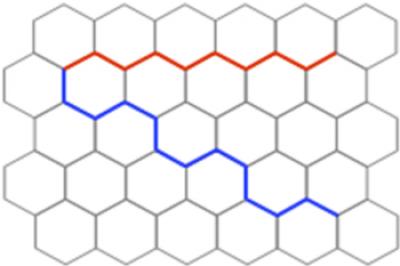
Shows graphene molecular zigzag (red) and armchair (blue) configurations in a honeycomb lattice.
“Previous strategies in bottom-up molecular assemblies used inert substrates, such as gold or silver, to give molecules a lot of freedom to diffuse and react on the surface,” says Han. “But this also means that the way these molecules assemble is completely determined by the intermolecular forces and by the molecular chemistry.” Currently, there is no molecule that can assemble to produce zigzag-edge GNRs.
To target the zigzag edge, the AIMR team used a copper surface—a substrate more reactive than gold or silver—to introduce new substrate-to-molecule interactions, in addition to the intermolecular interactions. The effects of this strategy were demonstrated using a precursor molecule known to form armchair-edge GNRs. On copper, scanning tunneling microscope images revealed a molecular assembly that is entirely different than that on gold or silver, yielding GNRs with periodic zigzag-edge regions. Future directions include the assessment of other reactive surfaces for bottom-up GNR fabrication and the determination of the property-tailoring effects of the GNR edges shown in this work.
Moreover, the surface reactivity of the copper substrate also has a profound effect on both the GNR length distribution and surface growth direction. Unlike previous assemblies, the current method produces shorter ribbons, only in six surface azimuthal directions. These features could be exploited for making single graphene interconnections between prefabricated structures by self-assembly.
“Diffusion-controlled assemblies, as seen on gold and silver, produce bundles of long GNRs. These methods are good for making interconnect arrays, but not single connections”, Han says. “Our method opens the possibility for self-assembling single graphene devices at desired locations, because of the length and of the direction control.”











